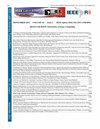虚拟环境下物联网网络C-NIDS的鲁棒性和可靠性评估
IF 1.3
4区 工程技术
Q3 COMPUTER SCIENCE, INFORMATION SYSTEMS
引用次数: 0
摘要
保护跨多个物联网域的数千台智能设备需要强大的协作安全解决方案,例如协同网络入侵检测系统(C-NIDS)。在这种情况下,NIDS之间的协作通过共享有关本地威胁的信息来改进入侵检测。然而,目前大多数解决方案忽略了这些系统的可靠性和鲁棒性评估,特别是当我们考虑C-NIDS时。因此,缺乏标准化和强大的评估来衡量C-NIDS在攻击检测中的可靠性和准确性,导致其正确识别威胁的能力存在重大不确定性。在本文中,我们提出了一种协作式入侵检测系统的评估,该系统集成了独立的入侵检测系统,以共享有关检测到的和减轻的威胁的信息,从而改进了整体入侵检测。评估在虚拟物联网环境中进行,结果表明,协作NIDS检测DDoS攻击的准确率至少为99.94%,最低召回率为99.94%,准确率为100%,在所有评估场景中F1得分为1。这些结果强调了统一评价标准的制定和采用,以确保C-NIDS的有效性和可靠性。本文章由计算机程序翻译,如有差异,请以英文原文为准。
Evaluating Robustness and Reliability of a C-NIDS for IoT Networks in Virtualized Environments
Protecting thousands of smart devices across multiple IoT domains requires robust and collaborative security solutions, such as Collaborative Network Intrusion Detection Systems (C-NIDS). In this context, collaboration among NIDS improves intrusion detection by sharing information about local threats. However, most current solutions neglect the reliability and robustness assessment of these systems, especially when we consider C-NIDS. Thus, the lack of standardized and robust assessments to measure the reliability and accuracy of C-NIDS in attacks detection results in significant uncertainties regarding their ability to correctly identify threats. In this paper, we present an evaluation of a collaborative NIDS that integrates standalone NIDS to share information about detected and mitigated threats, improving overall intrusion detection. The evaluation took place in a virtualized IoT environment and results showed that collaborative NIDS detected DDoS attacks with an accuracy of at least 99.94%, a minimum recall of 99.94%, a precision of 100%, and F1 score of 1 in all evaluated scenarios. Such results highlight the development and adoption of uniform evaluation criteria to ensure the effectiveness and reliability of C-NIDS.
求助全文
通过发布文献求助,成功后即可免费获取论文全文。
去求助
来源期刊

IEEE Latin America Transactions
COMPUTER SCIENCE, INFORMATION SYSTEMS-ENGINEERING, ELECTRICAL & ELECTRONIC
CiteScore
3.50
自引率
7.70%
发文量
192
审稿时长
3-8 weeks
期刊介绍:
IEEE Latin America Transactions (IEEE LATAM) is an interdisciplinary journal focused on the dissemination of original and quality research papers / review articles in Spanish and Portuguese of emerging topics in three main areas: Computing, Electric Energy and Electronics. Some of the sub-areas of the journal are, but not limited to: Automatic control, communications, instrumentation, artificial intelligence, power and industrial electronics, fault diagnosis and detection, transportation electrification, internet of things, electrical machines, circuits and systems, biomedicine and biomedical / haptic applications, secure communications, robotics, sensors and actuators, computer networks, smart grids, among others.
 求助内容:
求助内容: 应助结果提醒方式:
应助结果提醒方式:


